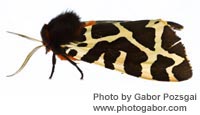Overview
 This page has been mothballed.
This page has been mothballed.
It is no longer being updated but we've left it here for reference.
Foot and Mouth Research
GROUNDWATER VULNERABILITY MAPPING IN SCOTLAND: modifications to classification used in England and Wales
From Robins, N.S. & Misstear, B.D.R. (eds) Groundwater in the Celtic Regions: Studies in Hard Rock and Quaternary Hydrology. Geological Society, London. Special Publications, 182, p71-79.
M A Lewis 1, A Lilly and J S Bell 2.
1 British Geological Survey, Wallingford
2 Macaulay Land Use Research Institute, Aberdeen
ABSTRACT
The recently published groundwater vulnerability map of Fife is the first in a series of maps for the Scottish Environment Protection Agency (SEPA), which includes the unpublished maps of the areas around Dumfries and Strathmore. Based on the methodology used on the Environment Agency maps of England and Wales, the lithology and permeability of the geological formations, and the physical and chemical properties of the soils are classified to produce 15 groundwater vulnerability classes. However the Scottish maps incorporate several modifications that improve their accuracy and usefulness.- These are:
- the geological formations are classified solely on the basis of their permeability and do not also incorporate aquifer potential;
- the occurrence of low permeability drift deposits at the surface are shown over the whole of the map area instead of only where they overlie aquifers;
- areas where borehole data indicate significant thicknesses of low permeability deposits in the drift sequence are shown. In these areas groundwater in the underlying solid rock formations may have a lower risk of contamination than indicated by the vulnerability zones. This is particularly useful information where the clay occurs beneath permeable drift deposits. The borehole distribution is shown to give an indication of the reliability of the boundaries;
- nitrate vulnerable zones are shown;
- the leaching potential classification of soils with organic surface layers has been improved.

